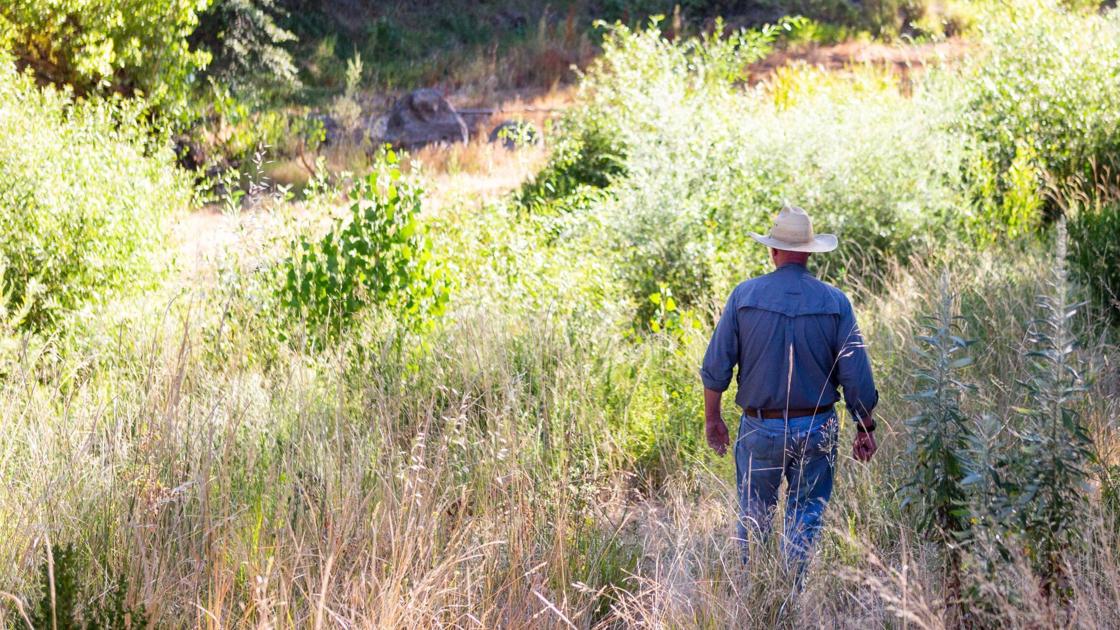Heavy rains test Napa Valley vineyards and river restoration projects | Local News
[ad_1]
When nine inches of rain hit Napa’s Gamble family vineyards last week, owner Tom Gamble saw it as a test.
With a vineyard near the Napa River, Gamble has been involved in restoration efforts for more than two decades, most recently working with partners to plant trees, grasses and other native vegetation along a mile-long stretch to Oakville.
So these shoreline stabilization efforts went through their first flood-worthy test, and Gamble was anything but disappointed with the results.
“I was able to walk it after the pour and realized that I still like to play in the mud because it’s very muddy, but it held up extremely well in its first test,†he said. . “Having been around the Napa River all my life, I have noticed that the rains that would have caused severe flooding have not been, and not that the floods are completely alleviated, but the severity of the damage they have caused. cause decreased. “
“I think restoring some of the environmental functions of the river is part of that. “
Support local media coverage and those who report it by subscribing to the Napa Valley Register. Special offer: $ 1 for your first 6 months!
Gamble Family Vineyards is just one local winery that has pursued river restoration projects over the years and has personally ceded around 10 acres of property for the cause. In addition to planting native species along the riverbank and riparian barrier, the actual width of the river has also almost doubled in this section, helping to reduce flow during extreme rain events as we recently saw. known.
People also read …
“I have seen that when the water enters the vineyard it does so much more smoothly and without damage compared to the often catastrophic damage,†said Gamble. “Giving up vineyard areas to allow the restoration project has paid off. “
Michael Honig of Honig Vineyard and Winery has also been involved in restoring the Napa River for over a decade and has given up about an acre of vineyard to increase the flood area in hopes of mitigating erosion and loss of habitat.
After observing the back and forth of the construction of the valley dikes and how they compromise the quality of the river, Honig recognized the need for a solution.
“We went to the county, the feds, the state engineering corps, and we were able to bring all these groups together. and then also bring the neighbors together, â€he said. “And in Honig’s case, we gave about an acre of very valuable land so that we could tear down the dike and create this type of amphitheater in the flooded area.”
Honig says that in addition to drainage, the reason this change was so big is that aquatic life cannot live if their environment is rushing with water.
“They kind of need an area to come out to the side to spawn and lay their eggs, and their eggs need to be able to hatch,†he said. “Before the rain that we just had there was no water in the river, then it got incredibly high very quickly because of all the rain that was coming in, but if you look at the river now, that worked perfectly. “
“It didn’t overflow, the areas that were typically for the overflow got water but it was very gradual, then it just wore off… It’s really a successful project.”
Further north in St. Helena, Titus Vineyards is also committed to restoring the river, this time with the help of the Fish Friendly Farming program. Since the area surrounding Titus’ estate has mostly stable banks, their section of the river was not deemed necessary for a full restoration project, but a tax was established before Titus purchased the land.
“In the ’60s the Army Corps of Engineers actually built a dike on about two-thirds of our property, and that’s what we kind of maintain and monitor because it’s there to stabilize the bank,” said winemaker Stephen Cruzan. “When we have flooding here, it doesn’t really overflow the dike – it does a good job of keeping the river in its channel and keeping the bank where it’s supposed to be. “
Cruzan and owners Eric and Phillip Titus focused their efforts slightly downstream of the tax, laying jute rugs and promoting native vegetative growth.
“You can see where the fire destroyed some of what we had there, but it did enough to promote good vegetation,†said Cruzan. “So during the last heavy rains that we had last week, we really didn’t have any problem with scaling or any problem with the loss of soil and sediment in there.”
“We are all doing our best to try to keep what we have and make the Napa River a place that can thrive.”
You can reach Sam Jones at 707-256-2221 and [email protected].
[ad_2]

